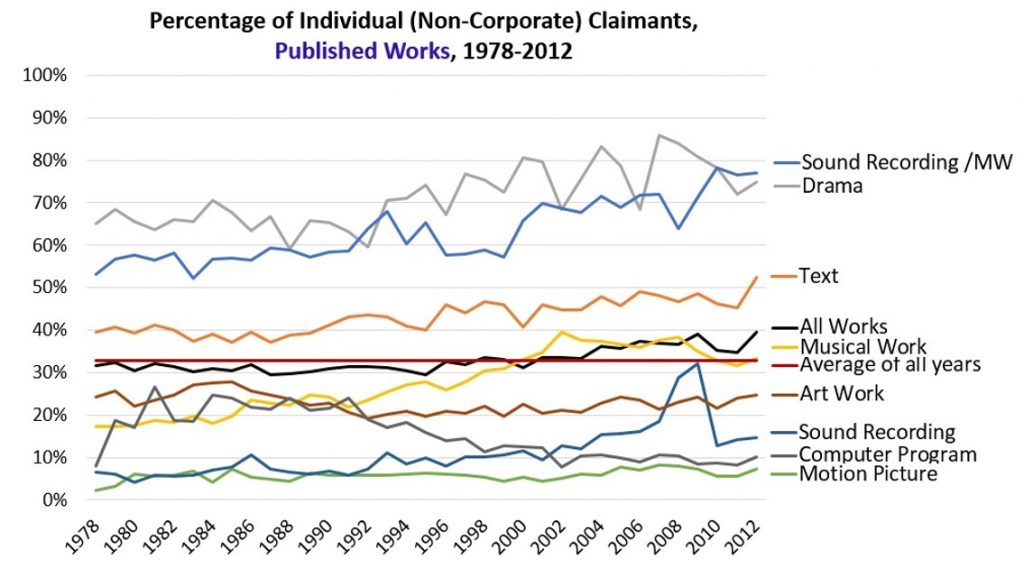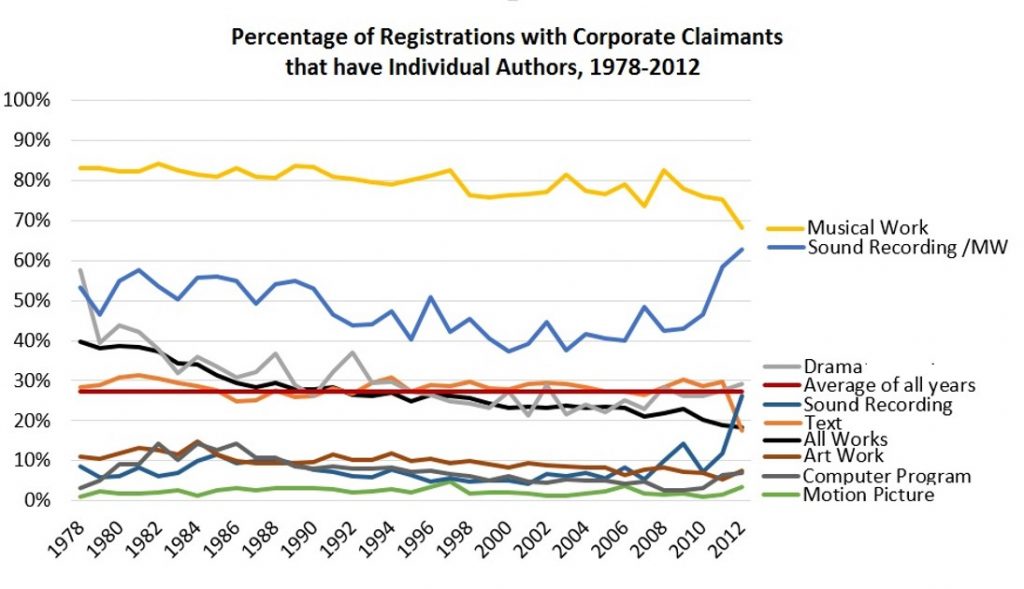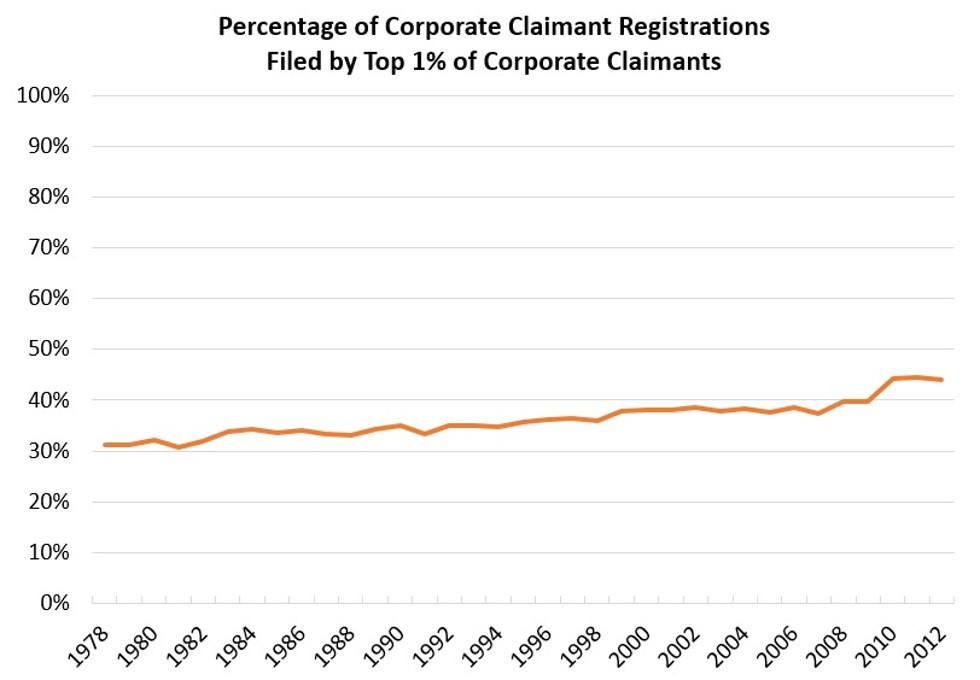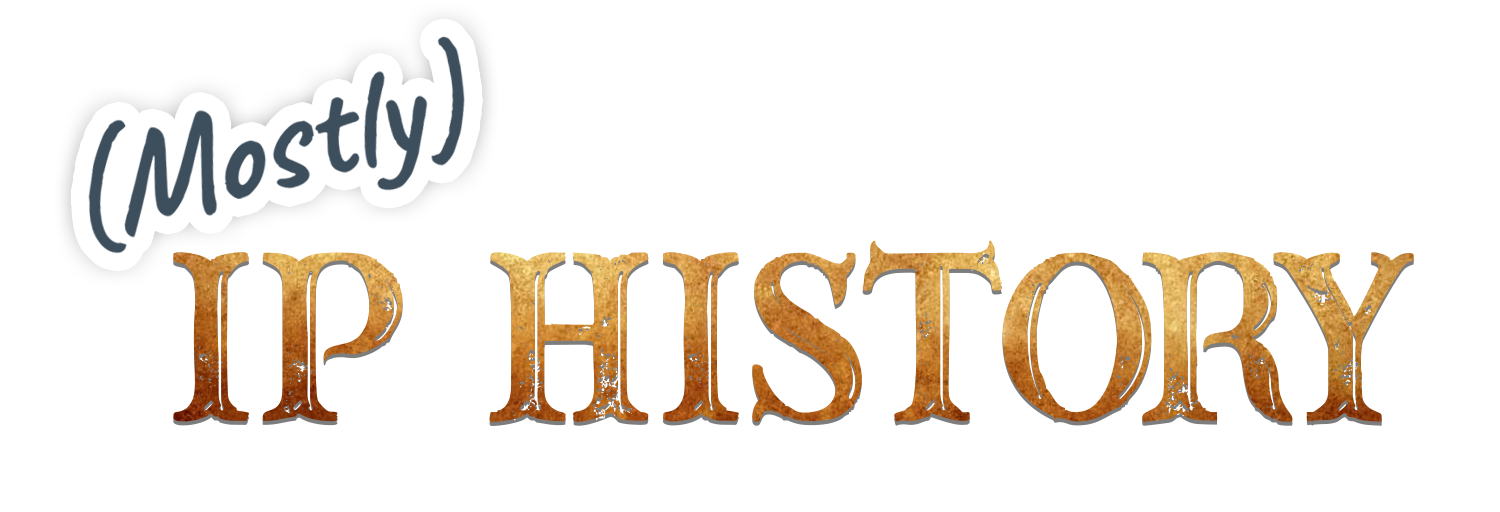The Landscape of Copyright Registration 1978-2012
On November 17, 2015, Robert Brauneis delivered the 12th Christopher A. Meyer Memorial Lecture on “The Landscape of American Cultural Production, 1978-2012: A Quantitative Look Through the Lens of Copyright Registrations.” The lecture is an annual series from the Copyright Society of the USA, along with the U.S. Copyright Office and others. The video of the lecture has long been online (although I can’t embed it here), and the second half of the talk became An Empirical Study of the Race, Ethnicity, Gender, and Age of Copyright Registrants, published in 2018 with Dotan Oliar. The raw data and online appendix are also worth looking at. However, an earlier part of the talk, dealing with the number of individual and corporate registrants, has not been published. Bob was good enough to send me his slides, and permission to share them. To be clear, beyond the interstitial text none of this is my work, and also this data is now about a decade out of date and would need a re-do for further analysis.
The first chart I found especially interesting is the analysis of what percentage of claimants for copyright registration are individuals (rather than corporations) for published works. It hovers around 30%, but it’s really depressed by sound recordings, computer programs, and motion pictures. Interestingly, musical works have gone from being below average to above average over this time period, as have registrations generally.

Next, a study of registrations by corporate claimants, this one asking whether an individual author is specified. Another way to describe this may be whether it’s a work for hire or assignment. This one averages the high-20s percentagewise, but has declined from 40% to 20% over this time.

Finally, the number of registrations by the top 1% (numerically) of registrants has been steadily rising, going from slightly above 30% to the mid-40s.

Folks who enjoy this stuff may also find my paper with Richard Schwinn, An Empirical Study of 225 Years of Copyright Registrations, interesting. We used some of Bob’s data to fill in gaps and continue our trends after 1978, which is where our own data naturally ended.





